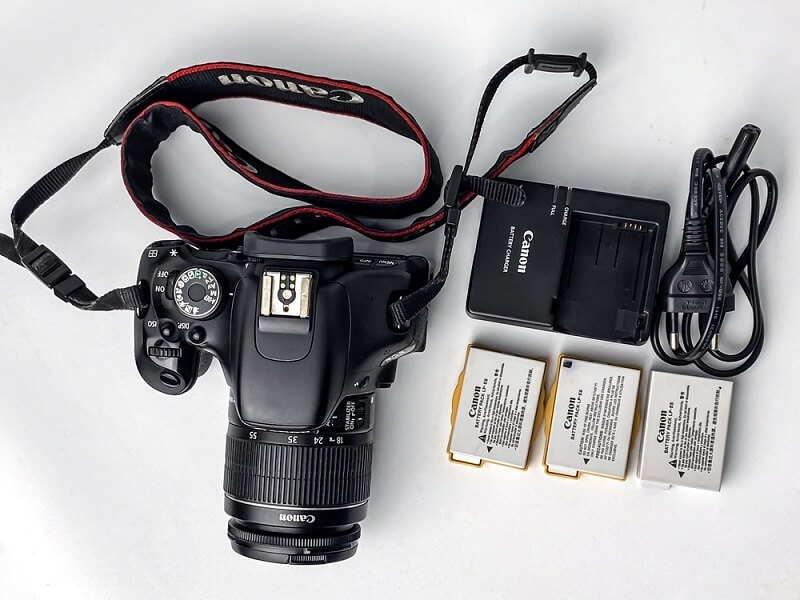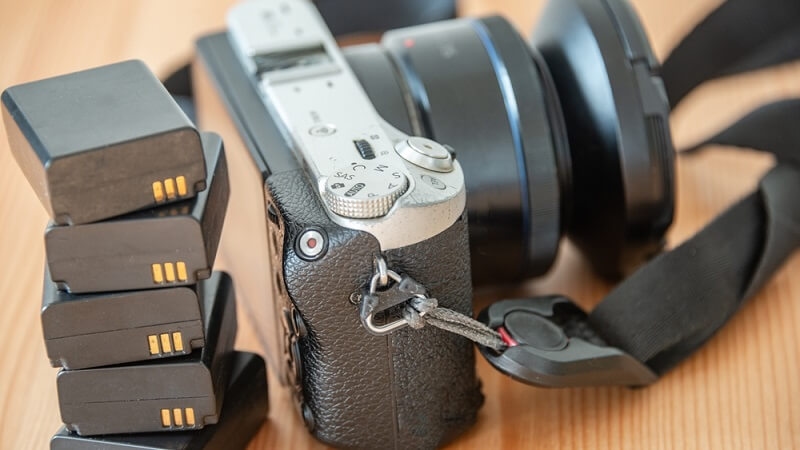
Photographers, whether hobbyists or pros, all know the heartbreak of a dead battery at the wrong moment. Imagine setting up the perfect shot—sunrise spilling over mountains, or a once-in-a-lifetime wedding kiss—and then, nothing. The camera dies. No backup. No warning. That’s why battery care for cameras is not just about convenience, it’s about protecting your work, your memories, and sometimes your paycheck.
The truth is, batteries don’t last forever. But with the right habits, you can stretch their performance, avoid common mistakes, and save money on replacements. Let’s dive into some practical advice on how to get the most out of your camera batteries.
It’s tempting to treat batteries as disposable, but they’re the lifeblood of modern photography. They power everything from the shutter to the LCD screen to your Wi-Fi transfers. Proper care means fewer mid-shoot surprises, more reliable performance, and fewer expenses. Beyond that, good practices also help reduce electronic waste. So, learning how to extend battery life is not just good for your wallet, but for the planet too.
Caring for your batteries doesn’t need to be complicated. Start with simple habits: keep them clean, charge them properly, and avoid extremes of heat and cold. A little consistency goes a long way. When talking about battery maintenance tips, think of it like looking after a car engine—you don’t need to be a mechanic, you just need to know the essentials.
Always use the right charger. Cheap knock-offs may seem like a bargain, but they can damage cells or shorten lifespan. Handle batteries gently, and don’t leave them rattling around loose in your bag where metal objects (like keys or coins) can short them out.
Let’s be honest—we’ve all been guilty of bad charging habits. Leaving a battery plugged in for days. Charging overnight, every night. Using off-brand wall adapters. These are the kinds of charging mistakes photographers make that silently shorten battery life.
The golden rule: unplug once fully charged. Today’s lithium-ion batteries don’t need to be drained to zero or topped off constantly. In fact, frequent shallow charges are healthier. Also, avoid charging in blazing hot environments—like your car on a summer day—because heat is a silent killer.
No matter how careful you are, batteries have limits. That’s why every photographer should own spares. The good news? There are plenty of affordable backup batteries on the market that perform well. Just make sure they’re compatible with your camera and come from reputable brands.
A smart trick is to rotate them. Instead of always relying on the same one until it’s dead, cycle through your collection. That way, wear is distributed evenly, and you don’t end up with one exhausted battery while the others stay nearly new.
Maybe you’re not shooting as much these days, or maybe you’re packing up gear for a long trip abroad. Either way, storing batteries properly is key. Poor storage can kill them faster than constant use. The best approach for long-term battery storage is to keep them partially charged—about 40–60 percent—and in a cool, dry place.
Never leave them fully drained for months; they might not wake up again. And don’t store them at 100 percent either, since that stresses the cells. A drawer in a temperature-stable room works better than, say, your garage in summer or a freezer (yes, people have tried it).
Day-to-day habits can make a massive difference. Keep contacts clean—dust, grime, or oils from your fingers can interfere with power transfer. If you notice dirt, gently wipe with a soft, dry cloth. Monitor for swelling or leaks, which are red flags to stop using the battery immediately.
Another overlooked trick? Turn off features you don’t need. Wi-Fi, GPS, and constant LCD preview drain juice faster than most people realize. Smart battery maintenance tips like these mean you’ll capture more photos on a single charge.

Shooting outdoors? Cold weather saps batteries at alarming rates. Tuck a spare in an inner pocket to keep it warm, swapping as needed. In hot climates, shade your gear whenever possible. And remember, reviewing photos constantly on your LCD can chew through charge quickly.
Want to know how to extend battery life even further? Use viewfinders instead of LCDs when possible, lower brightness, and disable unnecessary sounds. It sounds simple, but little tweaks like these often buy you that extra 10–15 percent that makes the difference between getting the shot or packing up early.
No matter how well you care for them, batteries age. You’ll notice they don’t hold charge as long, or they drain faster under heavy use. Some cameras even display battery health stats in the menu. Once you notice significant decline, start planning to replace. Having affordable backup batteries ready ensures you’re not left stranded when one gives out completely.
There’s no shortage of myths. “You have to drain to zero.” “Store them in the fridge.” “Fast chargers ruin them.” The reality: modern lithium-ion batteries are smart. They don’t need deep discharges. Fridges? Bad idea—moisture is worse than heat. And fast chargers? Fine if they’re designed for your specific battery model. Cutting through these myths is one reason honest battery care for cameras discussions are so valuable.
Ignore these tips, and you’ll pay the price—literally. Replacing batteries too often adds up, and worse, losing power mid-shoot can ruin opportunities. For pros, that might mean disappointing a client. For hobbyists, it could mean missing irreplaceable memories. Either way, neglecting care shortens both performance and lifespan. That’s why conversations about charging mistakes photographers make aren’t just nitpicking—they save money and frustration.
If you’re heading into an important event or trip, don’t gamble. Charge every battery the night before, test them, and pack more than you think you’ll need. For weddings or travel, pros often carry twice the expected number. Throw in a portable charger or battery grip if your camera supports it. These little preparations, plus a few battery maintenance tips, help you stay focused on creativity instead of power levels.
Sure, it takes a little effort—unplugging on time, rotating spares, storing them correctly. But the payoff is huge: longer lifespan, fewer replacements, less stress. Once you build these habits into your routine, you barely think about them. That’s when long-term battery storage and charging discipline stop feeling like chores and start feeling like part of your workflow.
Camera batteries might seem like small things, but they’re the backbone of every shot you take. Treat them well, and they’ll return the favor with reliable performance. Learn what drains them, avoid silly mistakes, and invest in decent spares. It’s not glamorous, but it’s the difference between capturing the moment and missing it.
So, next time you head out with your gear, don’t just check your lenses and memory cards. Check your batteries. Because a camera without power is just a paperweight. And with smart battery care for cameras, you can make sure that never happens.
This content was created by AI